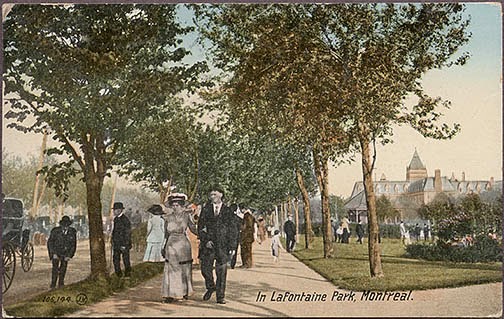Outside the Western exit of Montreal's city hall, tourists admire an alluring northerly vista, scrutinize the bronze statue of Vauquelin and perhaps visualize Charles de Gaulle shouting, "Vive le Quebec libre!" from a city hall balcony in 1967. But few know that just inches away and a few feet underground lies one of the city's historical treasures.
Directly beneath Place Vauquelin and the city hall finance department, amid a series of underground tunnels that link to the Montreal courthouse to the west and the Court of Appeal and Marche Bonsecours to the south, sits a labyrinth of cramped, unlit, unheated basement prison cells where Montreal's horse thieves, murderers and drunken rioters were detained from 1808 to 1838.
And while the cells have been denuded of their metal bars, and modern functioning plumbing taints the authentic feel of bygone penal confinement, one can easily recognize the small segregated rooms as the temporary abode of wife beaters, thieves and screaming miscreants who had endured months of punishment for crimes against early Montreal society.
The basement cells are all that remain of a three-storey building on the site that housed local evildoers until the Pied-du-Courant prison opened at a site now owned by the Societe des Alcools de Quebec beneath the Jacques Cartier Bridge. Unlike the cells beneath city hall, tours are offered to that newer prison, with a lot of discussion of the Rebellion of 1837.
![]()
The prison near city hall had room for 300 prisoners, but the tiny windowless basement cells are hardly evidence of the supposed progressive rehabilitative notions that went into its construction.
Onlookers praised the new prison when it opened but within two years critics lambasted the lamentable conditions.
"The Montreal jail, like that built around the same time in Quebec City, was supposed to alleviate the insecure conditions and overcrowding in the makeshift buildings previously used as prisons," says Donald Fyson, history professor at Universite Laval. "But Montreal's rapid population growth, combined with a shift toward using imprisonment more and more to punish petty offenders such as prostitutes and vagabonds, meant that by the 1830s, the prison was already overcrowded and inadequate."
City hall does not offer visits to the underground prison and the adjoining tunnels that once connected parts of Old Montreal, while still functional, are off limits for security reasons. (Although one tour company, Guidatours, based in Montreal, does have permission to bring 20 or so people once a year in July.)
![]()
Darren Becker, a spokesperson for the city of Montreal, said the cells fall under the jurisdiction of the historic Lucien Saulnier building, which once housed the city's courthouse and is now occupied by the city's finance department.
"As part of an effort to promote Montreal's heritage, the city could eventually explore the possibility of allowing tourists to visit the cells as well as other historic parts of the building, although there are no immediate plans to do so," he said.
The jail cells sit empty save for the occasional office item stored from city hall. Most of the cells have no doors; the few remaining have barred glassless windows.
The fieldstone walls do not betray any immediate obvious signs of human suffering although it's not impossible that anguished prisoners etched some painful wisdom for posterity -since no one seems to have studied the walls. Thus there's no physical evidence of whether prisoners such as Joseph Lince, who spent six months in the prison from March 1925 for stealing chickens, spent time in the downstairs cells.
![]()
The prison sat right next to the old courthouse, where the city's finance department now stands on Notre Dame St. E., and the proximity must have cut down travel time. So when waiter William Wardrobe stole Sir George Hoste's silver snuff box at the nearby Masonic Hall Restaurant on St. Paul St. in September 1825, the process of arresting, detaining, trying and sentencing the pilfering waiter all took place within a two-minute walk.
During the jail's three-decades in operation, particularly evil crimes such as rape were punished by hanging in nearby Champ de Mars and one might assume the pillory was also nearby, so convicts such as Jacob O'Dogherty sentenced to an hour in the wooden contraption for "passing a Spanish milled dollar" were also on display for proximate public perusal.
Sometimes prisoners escaped on the short walk from the courthouse to the Old Montreal hoosegow.
One such case recorded in the May 7, 1825, Montreal Herald described a "humorous race" involving an unnamed duo sentenced to "a few months imprisonment for a breach of the peace and 'a bit of a row.'" The two attempted to escape Montreal's finest who were escorting them to serve their sentences. One was caught immediately but the other successfully fled by "climbing to the tops of the houses" and then "among cliffs of the cape."
Perhaps the best known tale from the prison next to city hall was told by historian Edgar Andrew Collard in a Gazette article: In 1833, Adolphus Dewey, who murdered his wife with an axe and knife, was given the chance to escape thanks to the sympathetic jailer's daughter, who brought him keys and a file. But Dewey declined the chance to flee and accepted his punishment, willingly making his final walk to the scaffold.
![]()
While the Montreal jail under city hall will remain off the tourist map, at least for now, what's left of a similar prison in Quebec City, built around the same time, remains a popular attraction at the Morrin Centre where 5,000 visitors come to see 11 cells alongside the Literary and History Society of Quebec. (The cells will be closed for the rest of this year as the prison undergoes $400,000 worth of federally-funded maintenance.)
Visitors to the Quebec City prison get a charge from the old cells, says Morrin Centre executive director Simon Jacobs.
![]()
"You come through this nice hallway full of portraits of past presidents and then you walk in along crumbling walls and original floorboards, it's so narrow you have to turn sideways into a dark room with small windows. Some young kids and even adults don't want to go in there, it's pretty constricted," he says.
Quebec City's prisoner scraffiti betrays desperate notes from such infamous prisoners as Francois Lafage, known as le Docteur l'Indien, probably for the long robe he wore. Canada's first mass murderer, he was later executed outside the prison.
Another prison from that era, built in 1822 in Trois Rivieres, now welcomes 50,000 visitors to its cells and adjacent museum.
Some visitors choose to pay $60 a night to spend a night in the prison -the country's oldest when it closed in 1986 -to be treated as jailbirds, under the watchful eye of real former inmates hired by the prison.
But only one tour company brings tourists to Montreal's underground jail once a year in July. "I think city hall isn't really interested in showing off the cells," says Louise Hebert of Guidatours, " it's considered a privilege to see it and few visitors get down there.
"But seeing a place where Montreal kept its prisoners in chains puts the whole of Old Montreal into a different context."


































